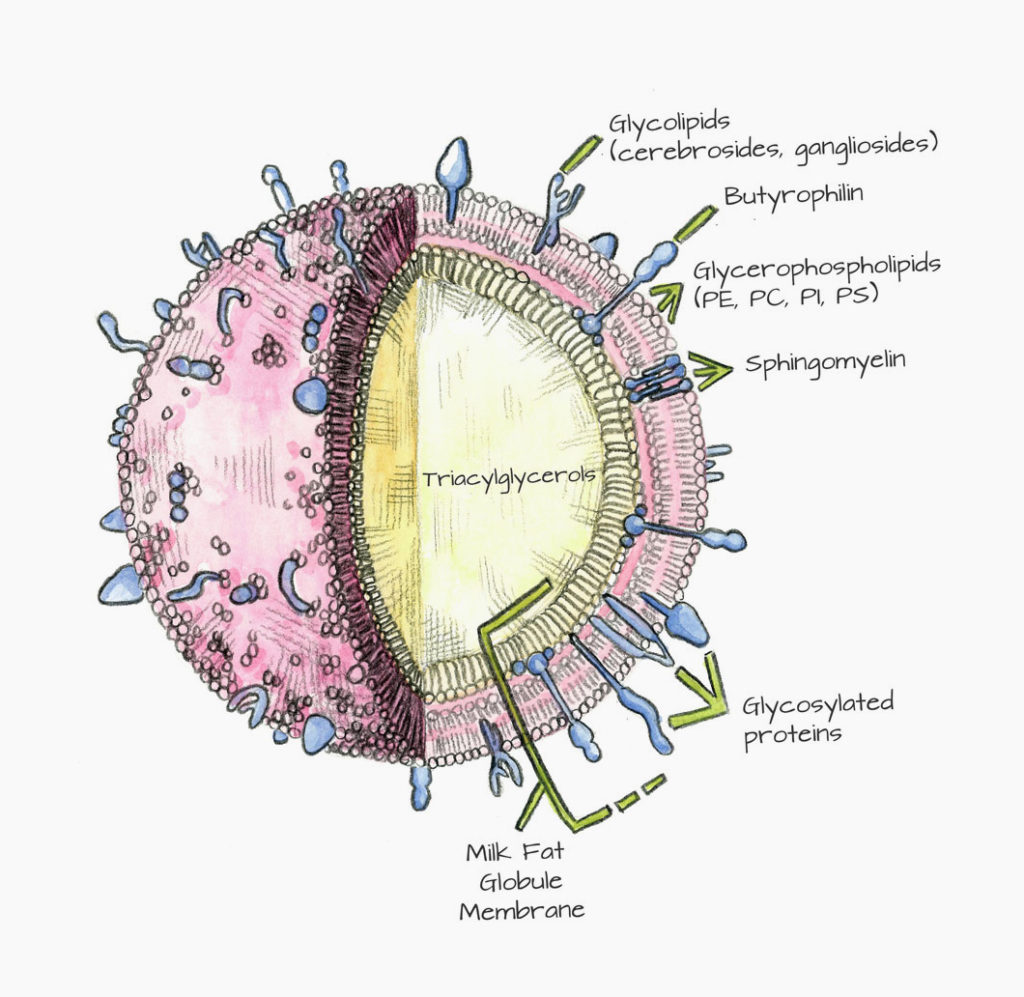In fresh milk, the fat molecules assemble in globules, and each globule is protected by a membrane. You can see the remnants of these membranes when you fry butter in a pan. The white part that separates from the yellow part is in part the protein unwrapping from the triglyceride in the centre of the milk fat globule. See a complete analysis of what the membrane is made from here. When fully intact in fresh milk, the fat globules are quite large (up to 15 μm in diameter) and prone to what is called ‘creaming’, which is the rising of the globules to the surface of the milk (University of Guelph). It is this rising process that homogenisation seeks to prevent.
The reason the globule forms in the first place is similar to the reason casein micelles form. It’s the hydrophobic and hydrophilic thing again. If you look closely at the diagram below you will see that the triglyceride in the centre of the globule has its glycerine heads pointing outwards. The glycerine heads are hydrophilic, or attracted to water. The hydrophobic tails point inwards, towards the centre of the sphere.
The milk fat globule (MFG) membrane protects the fats within it and contains other enzymes which, if broken apart, can begin to degrade the milk. We refer in particular to the lactase enzyme, which triggers lipolysis (see lesson 4.02). Pasteurising milk before homogenising it deactivates the LPL enzyme before it has a chance to start acting upon the triglyceride.

A milk fat globule
Polar Lipids
There is a biological function in keeping milk fat globules in an aqueous or watery phase throughout the milk: It ensures the whole of the milk is evenly nutritious to the infant. Polar lipids help explain how lipids can remain in an aqueous phase in spite of their very large diameter. Turning milk into butter takes a considerable amount of mixing forces; the milk fat globules take a number of hours to form cream,